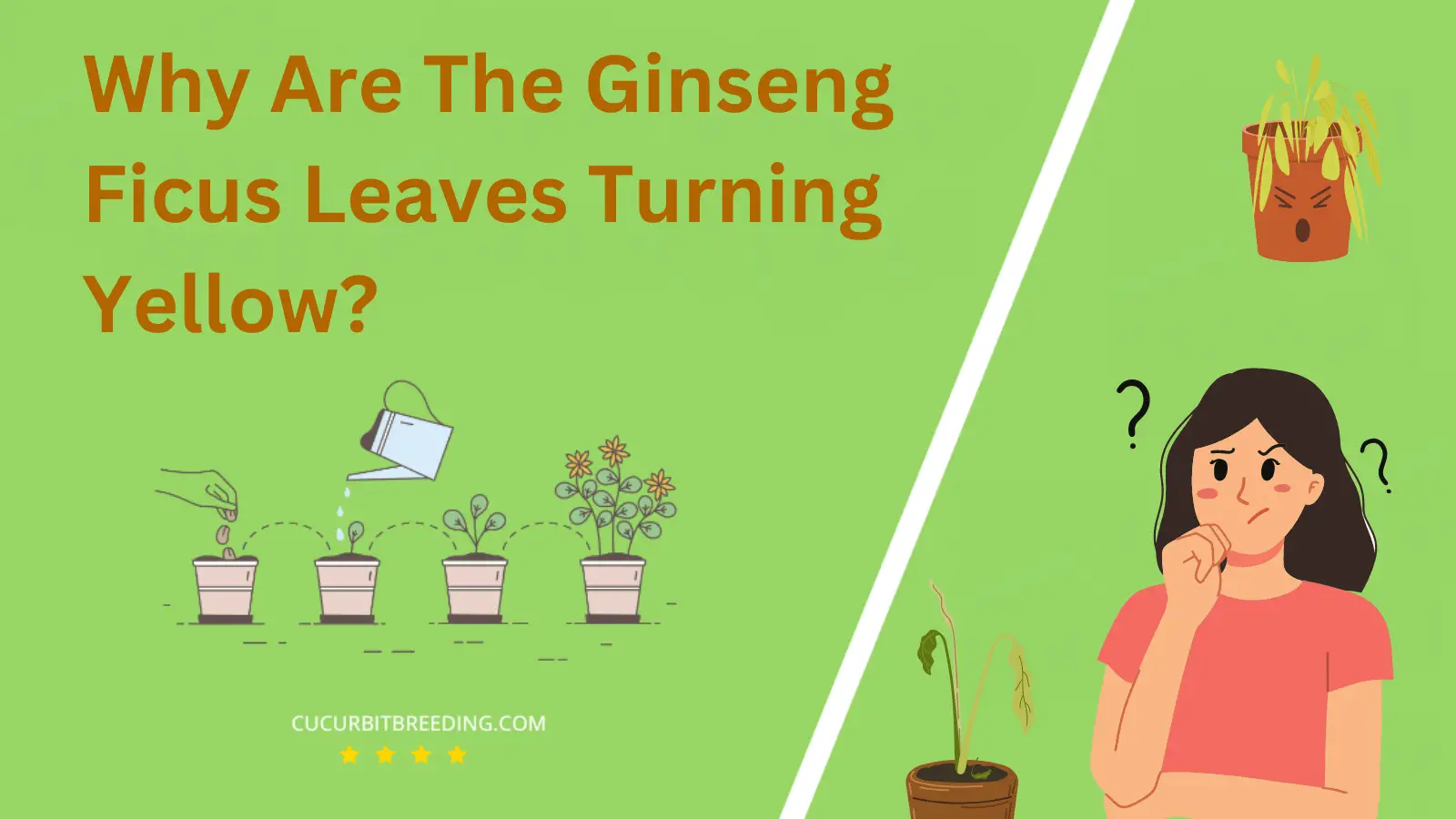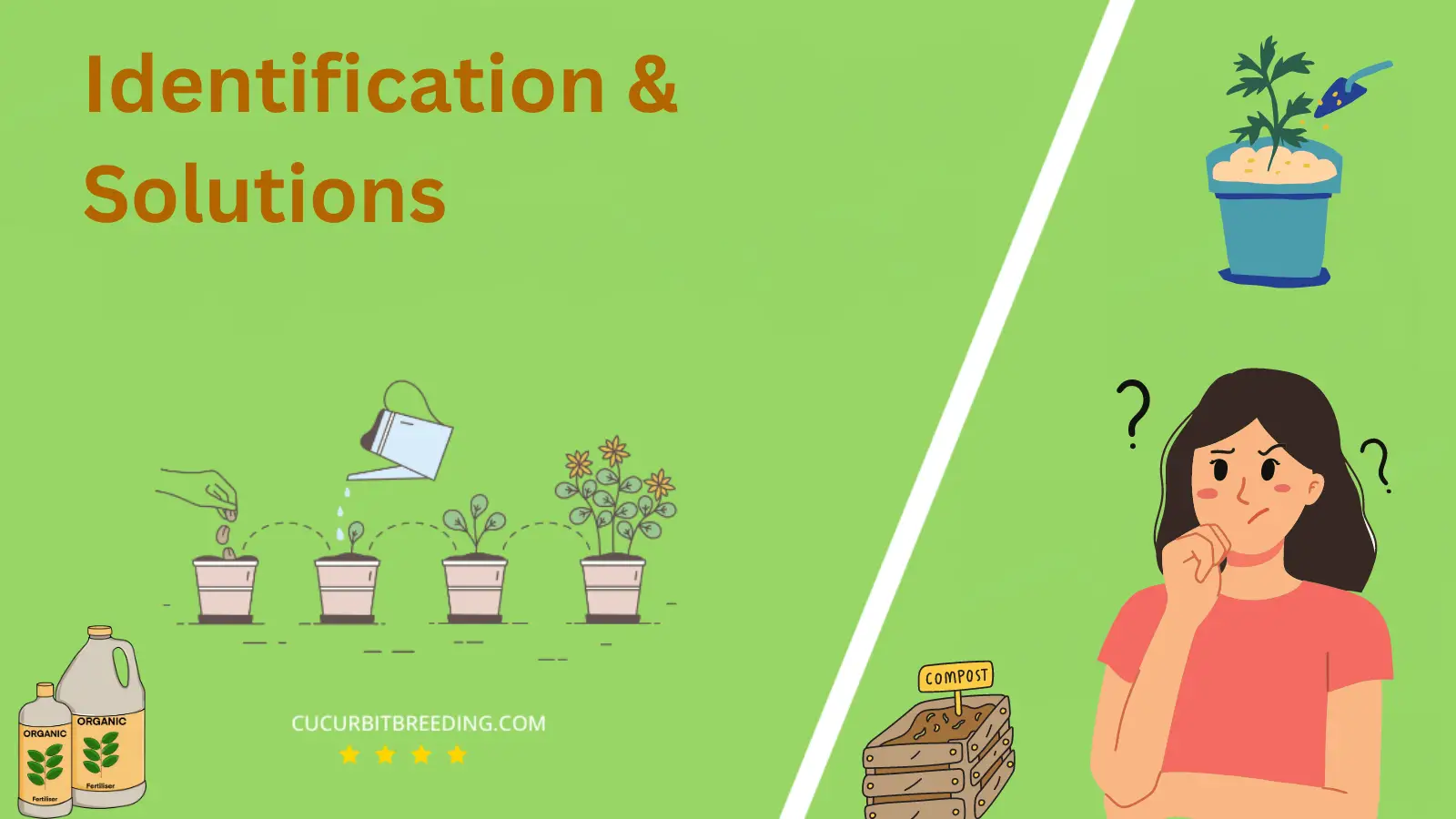
If you’re a proud owner of a beautifully sculpted Ginseng Ficus, the sight of yellow leaves may fill your heart with worry. Meticulously cared for, these plants become more than just green decor, they become a part of your family. So, when their lush green leaves start turning yellow, it feels like a daunting riddle that calls for immediate attention and resolution.
What might be causing this disheartening transformation? Is it a sign of disease, or perhaps a symptom indicating insufficient care? Let’s delve into the mysteries behind the suburban ficus’s cryptic language and find out.
Why Are The Ginseng Ficus Leaves Turning Yellow?
1. Overwatering
| Description | leads to root rot, preventing the roots from absorbing necessary nutrients and causing leaf discoloration. |
|---|---|
| Solution | Reduce watering frequency to allow the roots to dry out, improving oxygen levels and preventing rot. |
Overwatering is a common problem that can lead to yellowing leaves in ginseng ficus plants. Overwatering can cause the plant’s roots to become waterlogged and oxygen-starved. This condition results in root decay, hampering the plant’s ability to absorb necessary nutrients leading to yellow leaves as the plant is under stress.
To solve this issue, firstly, cut back on watering, allowing the soil to dry before the next watering session. Always check the soil’s moisture level before watering, it should feel dry to the touch. Secondly, consider repotting your plant into fresh soil that drains well to prevent further root decay.
One more essential solution is to improve the plant’s drainage. Ensure the plant pot has good quality drainage holes. If not, consider transferring the plant to a new pot with better drainage. This will prevent water from pooling at the bottom and promote healthier root growth.
2. Underwatering
| Description | Underwatering can cause the leaf to turn yellow due to lack of water and nutrients. |
|---|---|
| Solution | Water the plant more frequently to prevent dehydration and yellowing of the leaves. |
Effects of Underwatering: The ginseng ficus, like any other plant, requires an appropriate amount of water to maintain its vital functions. Underwatering leads to insufficient moisture for the plant, causing it to become dehydrated. As a result, the leaves turn yellow as an initial symptom of water stress. Underhydration may also hinder the plant’s ability to absorb nutrients from the soil, aggravating the leaf yellowing.
Solutions for Underwatering: To rectify this, gradually adjust your watering schedule. Increase the frequency or volume of watering, ensuring the soil remains consistently moist but not saturated. The use of a water meter can be beneficial in determining when the plant has adequate moisture. Regularly monitor the color and overall health of the plant as you adjust your watering schedule. This helps to ensure the plant is responding well to changes, and isn’t being overwatered, which can cause other problems.
3. Lack of sunlight
| Description | The lack of sunlight causes a decrease in chlorophyll production, leading to yellowing of the leaves. |
|---|---|
| Solution | Increase exposure to sunlight to prevent ginseng ficus leaves from turning yellow. |
The ginseng ficus is a tropical tree that thrives in sunlight. Insufficient sunlight can lead to inadequate photosynthesis, ultimately causing the leaves to turn yellow due to a lack of essential nutrients generated through this process.
To resolve the issue, consider the following:
1. Gradually introduce your ginseng ficus to a spot with more light. Be careful not to move it directly into harsh sunlight as it can cause sunburn to the leaves.
2. If indoor lighting is the only option, opt for a full-spectrum grow light to ensure the plant receives a range of light for photosynthesis.
3. Regularly rotate your plant. This helps all parts of the plant receive equal exposure to light, promoting balanced growth.
Remember, the key is to simulate natural conditions as accurately as possible. Proper lighting is crucial for a healthy ginseng ficus and consistent care will help it stay vibrant and lush.
4. Nutrient deficiency
| Description | The lack of sunlight causes a decrease in chlorophyll production, leading to yellowing of the leaves. |
|---|---|
| Solution | Increase exposure to sunlight to prevent ginseng ficus leaves from turning yellow. |
A nutrient deficiency in ginseng ficus can cause its leaves to turn yellow. Nutrient deficiency can affect a plant’s health by stunting its growth, making leaves appear pale or yellowed. This may be due to the plant’s environment lacking necessary minerals and nutrients for optimum growth, or poor absorption due to root problems.
To address this issue, make sure your plant is getting the right amount of sunlight and water, as these are vital for nutrient absorption. You can also try amending the soil with a good-quality, balanced fertilizer. This should contain nutrients like nitrogen, phosphorus, and potassium, which are essential for plant health. Use the fertilizer according to the package instructions.
If you suspect that root problems may be affecting nutrient absorption, you might want to consider repotting the plant. Make sure to provide ample drainage in the new pot to prevent root rot, which can also inhibit nutrient uptake. Each of these steps are crucial to addressing nutrient deficiency and hence, improving the health of your ginseng ficus.

5. Pests or diseases
| Description | Increase exposure to sunlight to prevent ginseng ficus leaves from turning yellow. |
|---|---|
| Solution | Inspect leaves for pests or diseases, treat accordingly based on specific diagnosis and recommended remedies. |
Ginseng Ficus leaves can turn yellow due to a pest infestation or disease outbreak. Pests such as aphids, scale insects, or spider mites feed on the plant sap, causing the foliage to turn yellow and eventually drop off. On the other hand, diseases such as fungal, bacterial, or viral infections can cause the leaves to wilt, yellow, and fall off as well. These adverse conditions disrupt the plant’s nutrient and water uptake, impairing its overall health.
To treat pest infestation, start by removing the affected leaves to stop the spread. You can also apply a mild insecticidal soap spray. For a serious infestation, use a stronger pesticide, following the manufacturer’s instructions. Remember that these remedies should be used conservatively, as overuse can harm the plant more than the pests.
If the yellowing is caused by a disease, treatment will depend on the specific type of disease. Therefore, it is crucial to rapidly identify the kind of disease to apply the appropriate treatment. Fungicides, bactericides, or viral control measures may be necessary. However, maintaining the plant’s overall health through proper watering, feeding, and light exposure can help prevent these issues before they arise.
6. Environmental stress
| Description | causes chlorophyll breakdown, leading to yellowing of leaves due to reduced photosynthesis. |
|---|---|
| Solution | Provide adequate sunlight, water and humidity levels, and protect from extreme temperatures and drafts. |
Environmental stress can greatly contribute to why ginseng ficus leaves are turning yellow. Factors such as poor lighting, improper watering, extreme temperature changes, and inadequate nutrient balance can instigate this type of stress. For instance, underwatering could lead to the plant becoming dehydrated, causing the leaves to yellow. Similarly, overwatering may trigger root rot, resulting in the same symptom. Additionally, if the plant is exposed to extreme temperature swings, it could suffer from leaf scorching or chilling injury, both of which may manifest as yellow leaves.
Providing appropriate environmental conditions can help mitigate the negative effects of environmental stress. For growing a healthy ginseng ficus, consider the following solutions. Place your plant in an area that gets ample but indirect sunlight, as direct sunlight can potentially cause leaf-scorching. Water the plant only when the topsoil is dry to touch, this helps to prevent overwatering and under watering. Maintain a consistent temperature range, ideally between 60 and 75 degrees Fahrenheit, to reduce thermal stress. And lastly, use a well-balanced plant fertilizer to ensure your ginseng ficus receives all the necessary nutrients it needs to thrive.
7. Aging or natural leaf shedding
| Description | The specific reason for a leaf turning yellow is aging or natural leaf shedding. |
|---|---|
| Solution | Increase nutrient intake to support new leaf growth and promote overall plant health. |
Yellowing leaves on a Ginseng Ficus can often signify improper watering. This typically could be either overwatering or underwatering, and both can have adverse effects. Overwatering can cause roots to become waterlogged and oxygen-starved. On the other hand, not watering enough could make your plant dehydrated, leading to yellowing leaves as the plant tries to conserve water.
Rectifying this problem involves finding the right balance in watering. The Ginseng Ficus enjoys soil that is slightly damp, but not too wet. Using a finger, test the soil’s moisture levels before watering again – if the top inch of the soil is dry, it’s a good time to water. Ensure adequate drainage to avoid waterlogging. The top layer of its soil should be allowed to dry out completely before more water is added. Always avoid letting the plant sit in a plate of water.